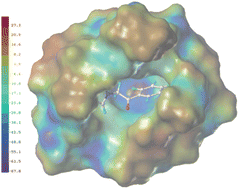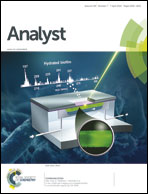A computational exploration of imprinted polymer affinity based on voriconazole metabolites†
Abstract
The aim of this study was to create a new computational model capable of evaluating the affinity of imprinted materials to the specific target. A 1-(2,4-difluorophenyl)-2-(1H-1,2,4-triazol-1-yl)ethanone (L1), the main metabolite of voriconazole (L2) – a modern antifungal drug, was proposed as a template. In a computational analysis of polymerization systems composed of the template, the monomers and the cross-linker molecules the appropriate porogens were simulated. A non-covalent approach for the formation of a polymer matrix from eight functional monomers was employed in the theoretical and experimental studies. The binding affinities towards the template were measured for eight synthesized polymers. The experimental results confirmed that the proposed theoretical model properly showed isopropenylbenzene 1 as the most suitable monomer to synthesize the polymer with the best affinity to L1. The novel computational protocol was more suitable to predict the properties of polymer systems than the simple analysis of template–monomer interactions. On the basis of the polymerization complex PMC1 (template–isopropenylbenzene 1–cross-linker), the adsorption cavity was modeled and the intermolecular interactions of the template molecule and the other voriconazole metabolites inside the cavity were analyzed to get an insight into the polymer matrix selectivity.


 Please wait while we load your content...
Please wait while we load your content...